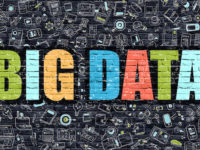As a small-business owner, it’s likely that you are already using the cloud for some of your IT services. It may be cloud-based accounting software or simply storing files in the cloud using services like Dropbox.
Consider exploring further into the cloud with a cloud-based solution that makes it possible for all your hardware, software and support to be delivered as a service.
Cloud-based virtual desktops are predicted to be the next big thing – and an effective solution to issues such as security threats, high IT maintenance and upgrade costs, endless replacement cycles and desktop management woes.
Introducing Desktop as a Service (DaaS)
Desktop as a Service is a relatively new IT service delivery model allowing any type of business to outsource virtual desktops to a remote cloud service provider for an all-inclusive monthly subscription fee.
It’s a form of Virtual Desktop Infrastructure (VDI). DaaS can be provided through public cloud, private cloud infrastructure, and hybrid cloud platforms. It’s continuously evolving to address issues such as desktop management problems, shrinking IT budgets, BYOD (bring your own device) initiatives, increasing mobile workers, Windows migrations, growing security and compliance issues, and Intellectual Property (IP) concerns.
How DaaS works
A typical DaaS service includes a virtual workspace that supports multitenancy architecture, shared storage, remote backup, upgrades for supported applications, 24/7 technical support, and other critical services for simpler desktop management. This means reduced hardware expenses, increased flexibility and greater mobility for the users.
You rent your desktop per user and you can create multiple user environments that can be configured based on the functionality needed. In the same way you’re given a free hand to add or delete users as needed.
Cloud-based virtual desktops are an effective solution to security threats, high IT maintenance and upgrade costs, endless replacement cycles and desktop management woes.
The service is independent of device, location and network. Mobile and home users connect through the internet or via a virtual private network (VPN). You likewise have the choice to subscribe to a package that will easily and readily copy all personal data of each user, to and from the virtual desktop, upon logon/logoff.
Back-end infrastructure costs and maintenance (backup and data recovery) are the responsibility of the provider, as well as and upgrading of your software and hardware. Customers just usually manage their own desktop images, applications etc., except if those desktop management services are part of the subscription.
The monthly or yearly fee typically covers all the necessary licences.
The heated DaaS market
Amazon Workspaces
Amazon launched Amazon Workspaces in November 2014 for a limited preview.
It’s a fully managed desktop computing service designed to run on both Windows and Mac computers. The virtual desktop is synchronised so a user gets persistent sessions (e.g. the user can end one session on a laptop and start another on a smartphone). Data is backed up multiple times a day without disrupting a user’s ongoing work. Its key security feature is an innovative connectivity protocol called PCoIP, which displays desktop information as a video stream. This ensures that the content remains secure in the backend, displaying only the necessary information at the user’s end.
Amazon WorkSpaces are offered in bundles. For each bundle, you get Adobe Reader, Internet Explorer 9, the latest version of Firefox, 7-Zip, Adobe Flash, and Java Runtime Environment (JRE). But you can add your own software of choice to the basic package.
Horizon DaaS
But not to be outdone, VMware launched Horizon DaaS for $35 per user per month just days ago. This makes it the first big company to release its DaaS offering for general availability – beating Amazon to the game. Clients can choose between 1 vCPU with 2GB RAM, and $50 for 2 vCPUs with 4GB RAM. Both come with 30GB storage available in either persistent or nonpersistent disk types. The OS can be either Windows client or Windows server.
Horizon DaaS is actually a rebranded Desktone, a technology it acquired last year. Although it has been available for a while now, this time end customers can buy the service directly from VMware via their vCloud Hybrid Service (vCHS). This new release offers desktops from VMware’s three US data centres (Santa Clara, Dallas, and Virginia), with Europe and Asia coming soon.
Google Chromebooks
It’s also worth noting that, just weeks ago, VMware also announced its partnership with Google for the Desktop-as-a-Service on Google Chromebooks. This new service, which is a combination of on-premise and cloud-based models, aims to provide secure cloud access to Windows features via VMware’s DaaS platform. VMware and Google claim businesses can save $5000 a head over other PCs.
DaaS on Chromebooks will be offered on a subscription basis, but no word yet on pricing or when it’s going to be available to everyone.
So it’s clear that DaaS is soon to become broadly available to business owners looking to simplify and fully outsource their IT. Expect to hear a lot more about Desktop as a Service in the coming 12 months from your large IT vendors and IT services businesses.
Centrix Solutions













